I've been a comic artist for over twenty years. I am mostly known for my educational comics, but I also make kids comics, one page gag comics, interviews in comics form - and now I made an honest-to-god, 200 page graphic novel that I want to tell you about:
What's it about?
"You're going to die" is what Nina's mother told her when she was fourteen. Nina had been bedridden for years, was administered 21 pills a day, in and out of hospitals, yet no one was able to figure out what was wrong with her. Because there WAS nothing wrong with her. It was her own mother who made her sick.
This is a true story. Nina Blom survived the abuse and has made it her mission to spread awareness about what is commonly known as Munchausen by Proxy Syndrome (Pediatric Condition Falsification) - the case where a parent or caretaker, usually the mother, makes a child ill om purpose, just to get attention herself.
Nina and I worked closely together during the process of making this graphic novel. She provided me with many documents, photographs and reports which made it obvious to me that several doctors, nurses and psychologists were aware that Nina's real problem was her mother - but it was extremely hard to intervene, since the abuse was difficult to prove. As soon as the mother felt not heard, she would switch doctors or even move house.
To tell Nina's story, I chose a minimal drawing style with hardly any backgrounds. I wanted readers to get drawn in by the characters and the subtlety of the action. Much of the mother's threats are conveyed by body language and expression. A simple scowl behind the doctor's back was enough to intimidate young Nina, and threaten her into going along with her mother's fabrications.
A well-documented period in Nina's life was age 9 to 11, when she lived away from her parents for 15 months in a psychiatric children's ward. I loved drawing this chapter (the largest in this book, about 50 pages) since it shows a lively young girl coming out of her shell, enjoying music, falling in love. This is a very important warning sign in cases like this: the child's behavior away from the parents is radically different than what the parents report.
The roller coaster analogy is very important in the book. As Nina writes: "It felt like my mother put me in a roller coaster and I couldn't get out."
The process of making the book was a roller coaster in itself - we produced it in record time (all the inking was done in 98 days), with the bizarre synchronicity that Nina had to go to hospital for real (a whole month, for gall bladder infection) just as I was drawing the final chapter in which she spent eight months in hospital recuperating, after having been rescued by an observant pediatrician.
I often say that making comics can be therapeutic, and this book has been a therapeutic journey for both Nina and me, in which she revisited her past and I put it literally in perspective. There's a special healing power in seeing yourself depicted in traumatic situations. I think it's because it enables one to abstract themselves from experiences that have been living in one's head. Getting them out there for all to see and talk about makes for a less lonely experience, at least that's how Nina described this journey to me.
The book is graphic (a graphic novel after all), but not too graphic - we've heard back from children as young as nine who read it and could really empathize with Nina. I made a conscious choice to leave out a few of the most gruesome details of Nina's abuse, since I felt they would distract from the narrative.
What is it like for an artist to draw such a horrific story?
During the making of this book I focused on the artistic process: I had heaps of research material (including Nina's autobiography 'You are a horrible child' from 2011) and a very clear view of the dramatic line I wanted to follow. (Tip: it helps to know what the last page will look like. The whole book flows towards that point, so it's important to have that foremost in your mind while working).
Because I was so intensely focusing on script, dialogue, gathering and discarding details to use, it was easy to "forget" this was a story that really happened to a real person. This is a type of dissociating that is absolutely necessary for any creative process in my opinion, but especially for one that's as intense as this one.
There were a few moments however in which it hit me: this happened. Nina's parents took joy in reducing their child to an object. They were ready to see her die. They have never been prosecuted for what they did.
What do you do with the feelings of anger and powerlessness when you draw such a story?
During the process, Nina reassured me a few times: "Remember, I am fine now." That was important to keep in mind: Nina's story has a happy ending, she became a strong woman who faced her past and is now an advocate for other victims. This graphic novel is a very important tool for her in her mission to spread awareness.
Apart from that, as an artist I was able to put a little of myself in the book. As I progressed, I identified more and more with Emma, the physical therapist. I gave her my haircut and let her utter all those things that went through my mind: why didn't people intervene sooner? Why were Nina's parents not locked up?
Most of the book wrote itself, thanks to Nina's autobiography and extensive archive. Only in a few cases did I take artistic license, like in this scene where Nina's caretakers in the psychiatric clinic discussed the possibility of her going home again:
We don't know if this really happened, but it is obvious that something went very wrong in this assessment. Some of the feedback we have gotten for the book is that a scene like this is indeed, sadly, very relatable for people working in the field.
One of the hardest scenes to draw was this one:
The text is taken verbatim from transcripts of the first visit Nina's parents were allowed after she was rescued. The sheer callousness, the thinly veiled aggression, the audacity to continue verbal threats even while being filmed - it sends goosebumps down my spine.
In The Netherlands there are at least a hundred cases every year that are reported and investigated. It is estimated that five children die each year, probably more. In Nina's case it's obvious that without intervention, she wouldn't have survived.
I feel so honored that I got to make this book. People who read my educational work know that I care about carrying a message through comics (probably part of my legacy as a clergyman's daughter). Never have I felt more urgency while drawing than with this project.
Nina says: "This book can save lives."
I absolutely hope it will.
'You're going to die' is published in The Netherlands by Personalia with the title 'Jij gaat dood'. An english version is already finished. We are currently looking for a foreign publisher who dares to take it on.




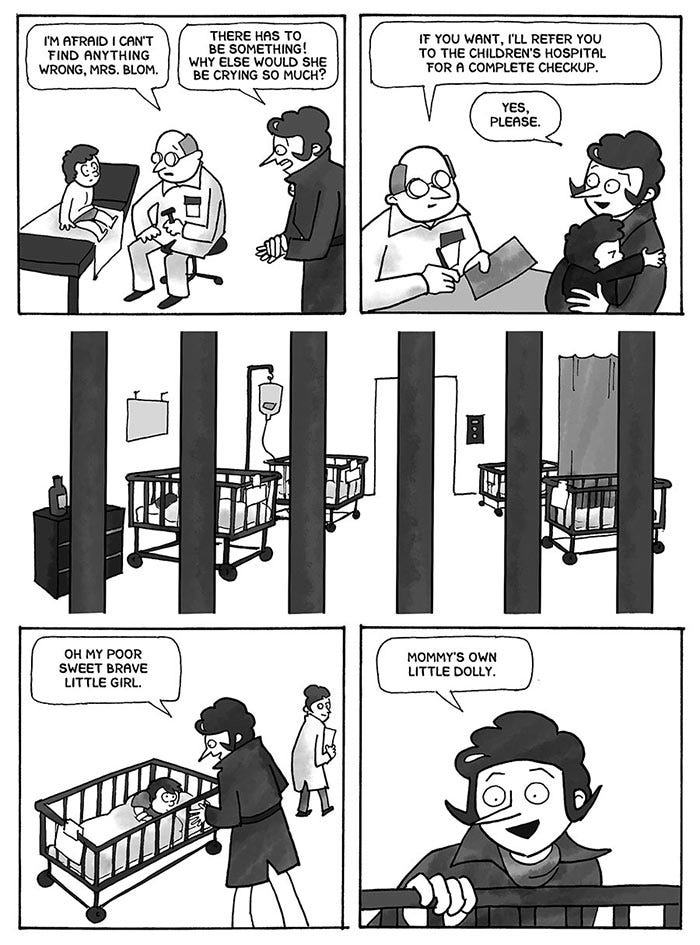
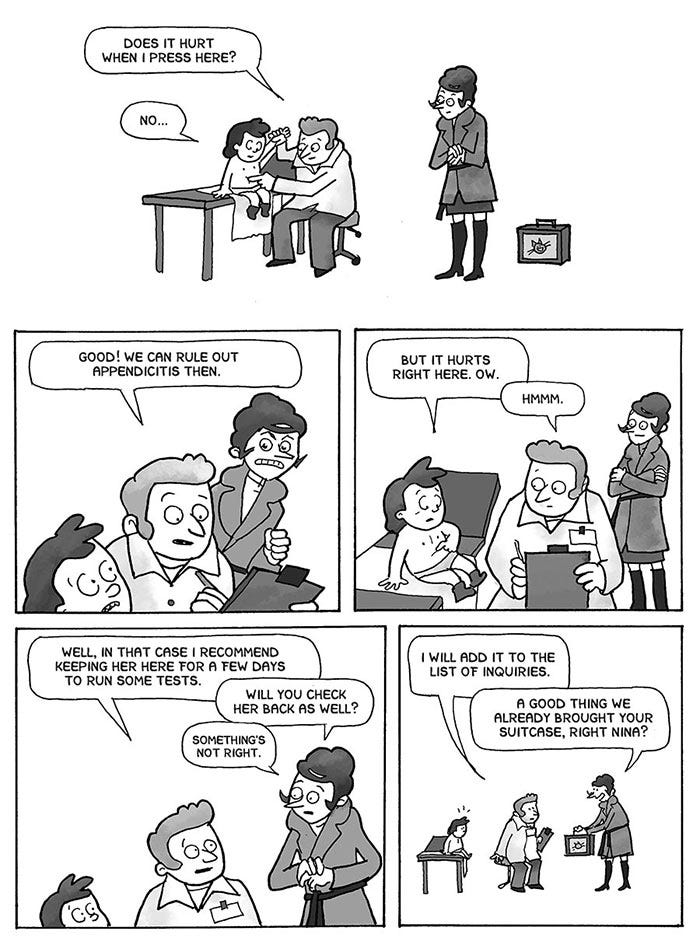
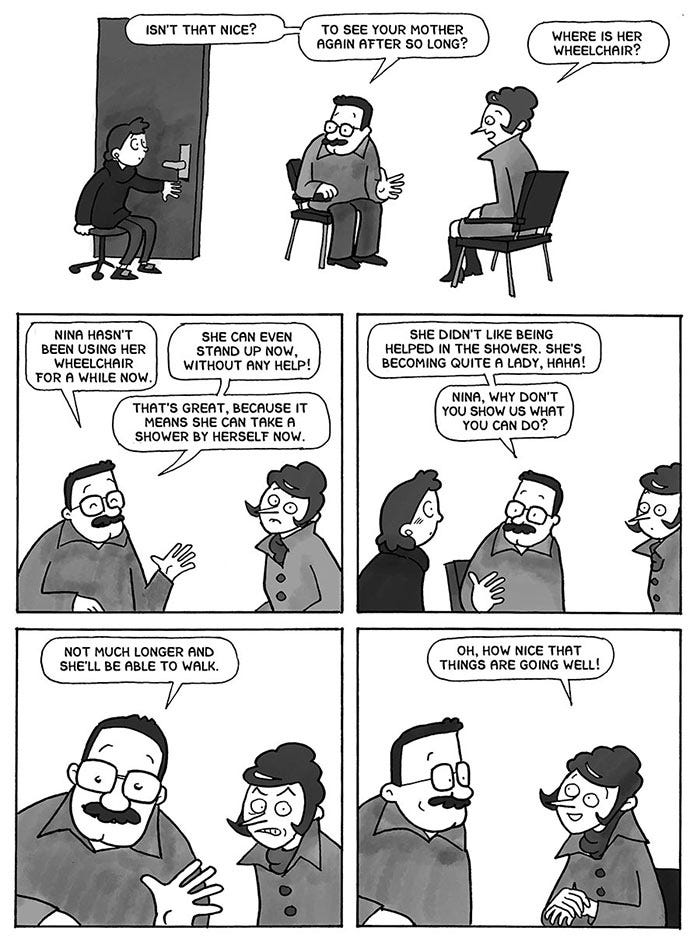
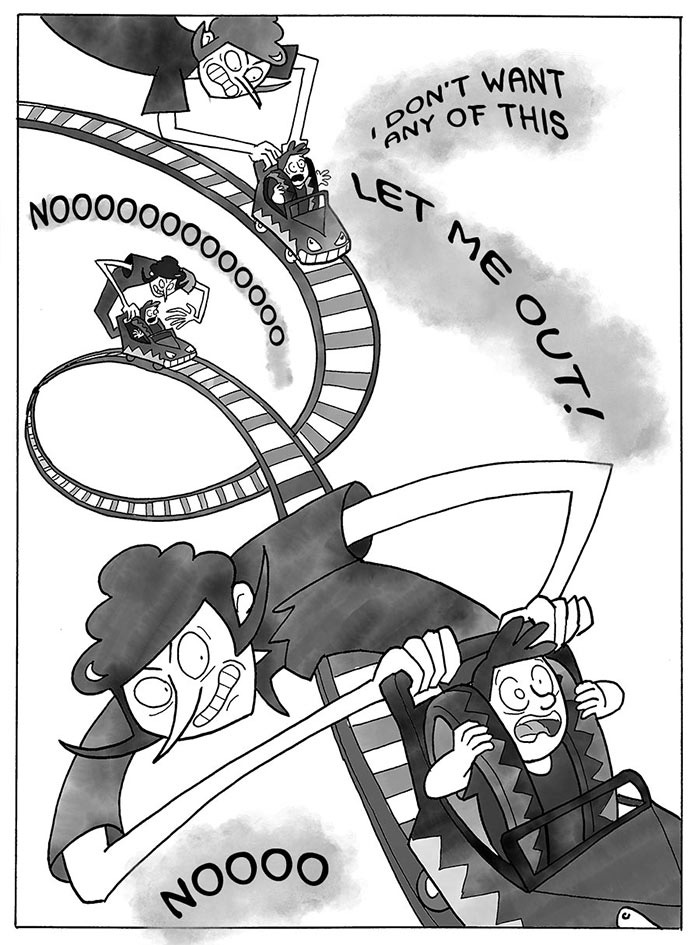
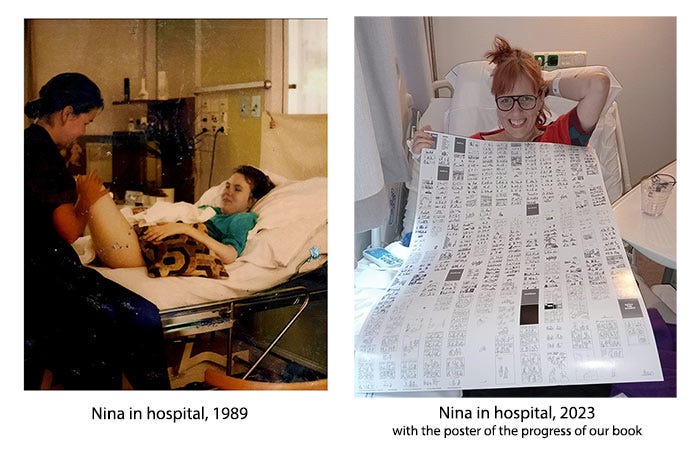
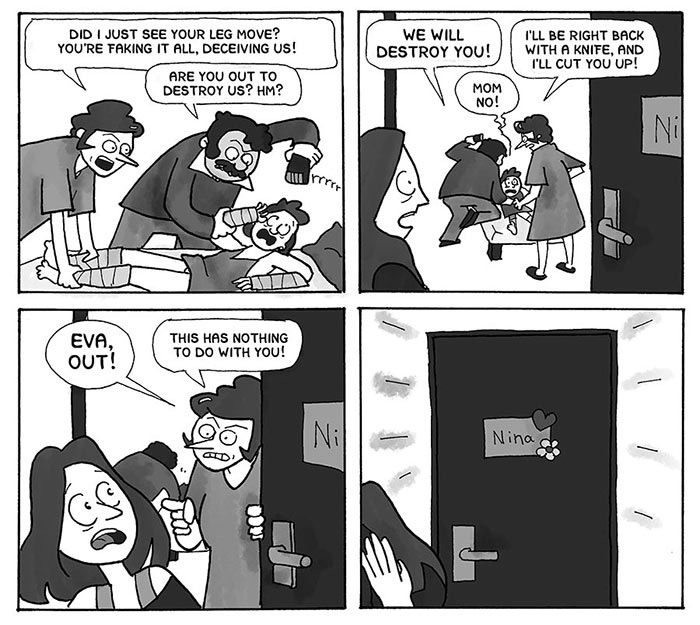
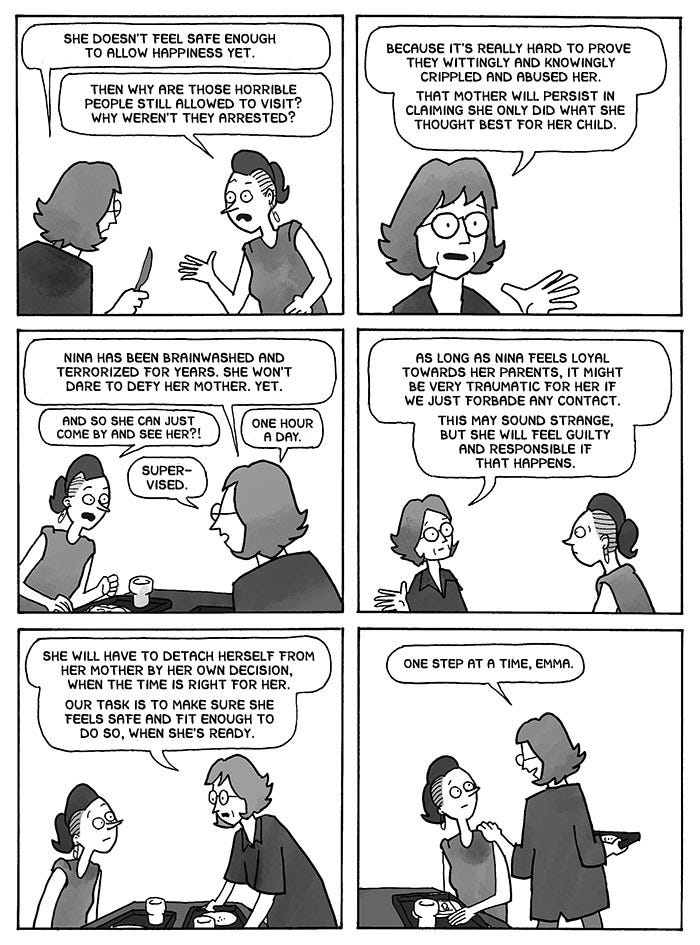
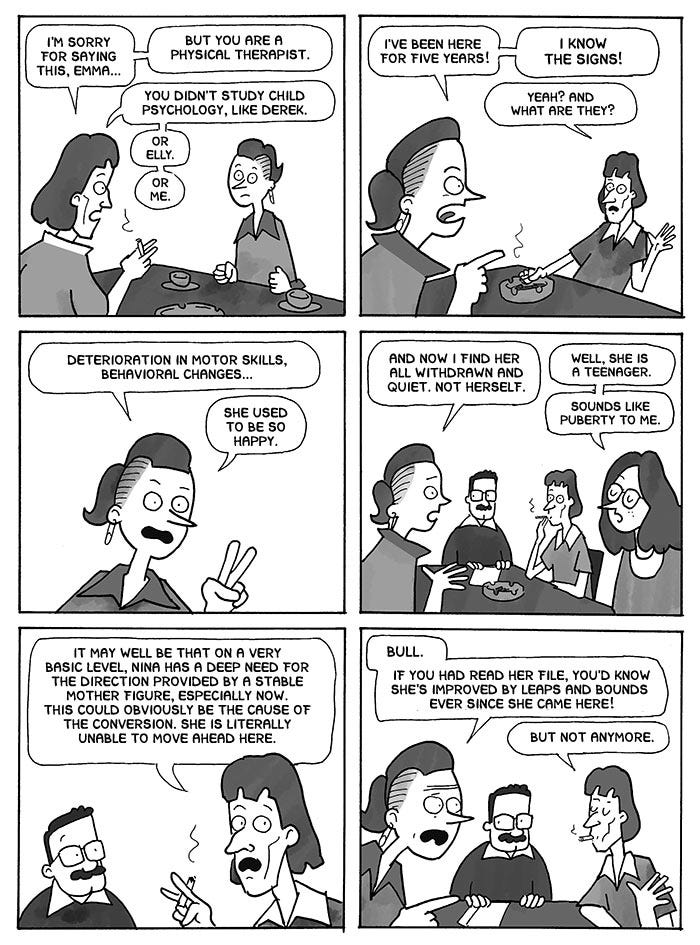
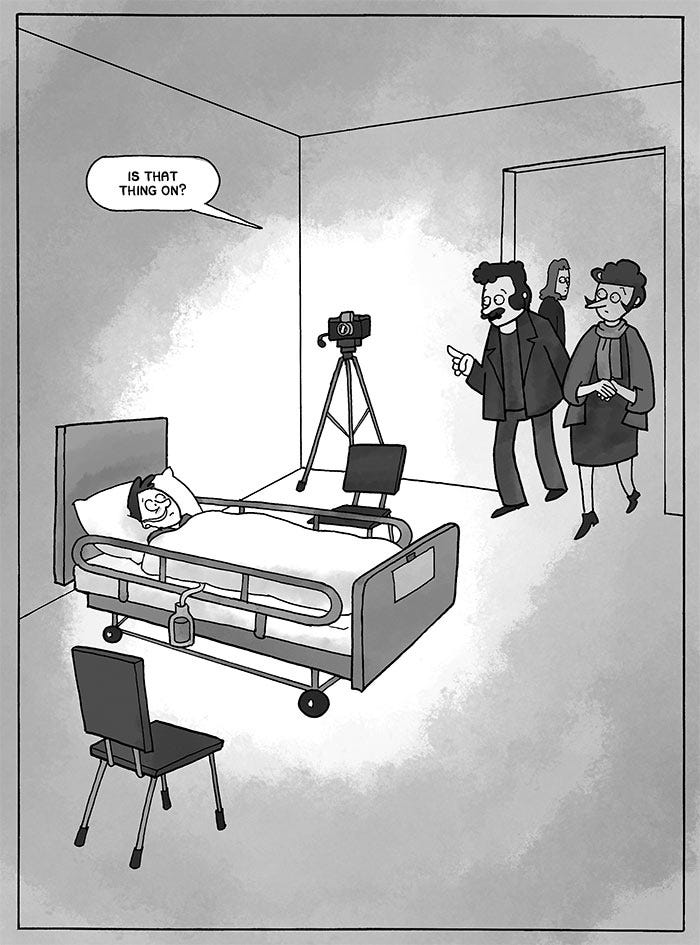
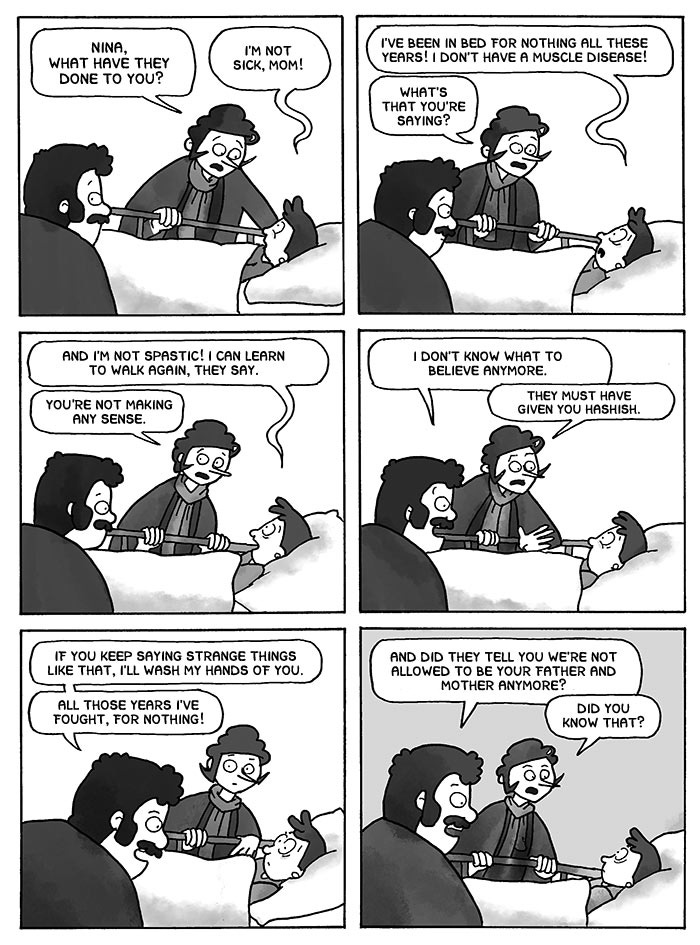
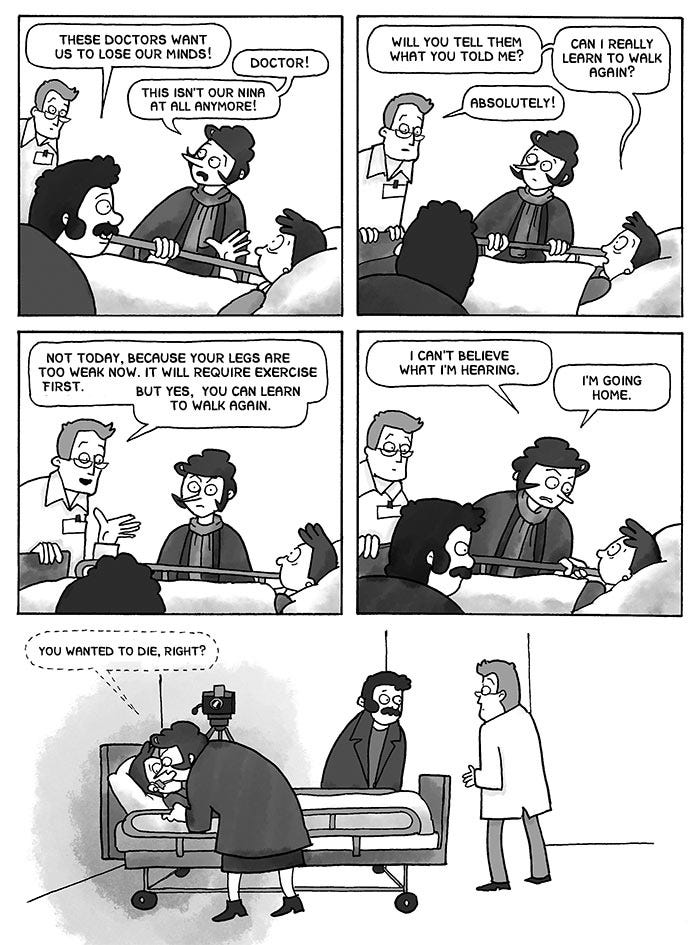
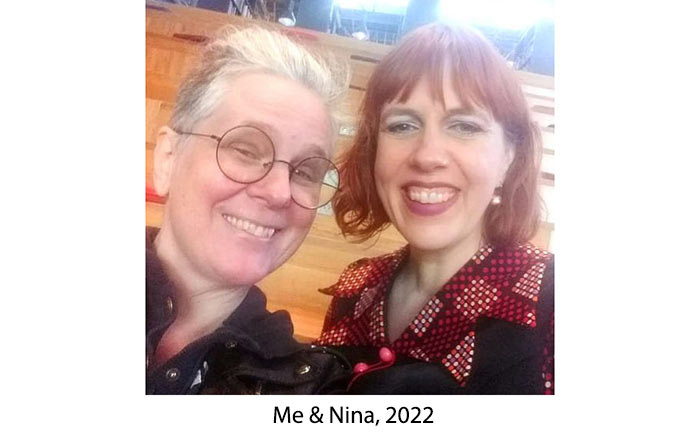
This is a powerful and wonderful depiction about a horrible subject. I will be happy to purchase the English version when it gets published. Thank you for sharing these pieces.
Margreet, if you haven't considered Graphic Mundi, an imprint of Penn State University Press, please do. Publisher Kendra Boileau and her team are establishing a good reputation for publishing works of "graphic medicine," which your book is a tremendous example of. In general, the website graphicmedicine.org may be a good resource for you to explore other comics about illness and healthcare, and maybe get leads on other publishers. I don't know of other graphic novels on Munchausen by Proxy, so the market is all yours! I hope you find an English publisher, best of luck with this important project.